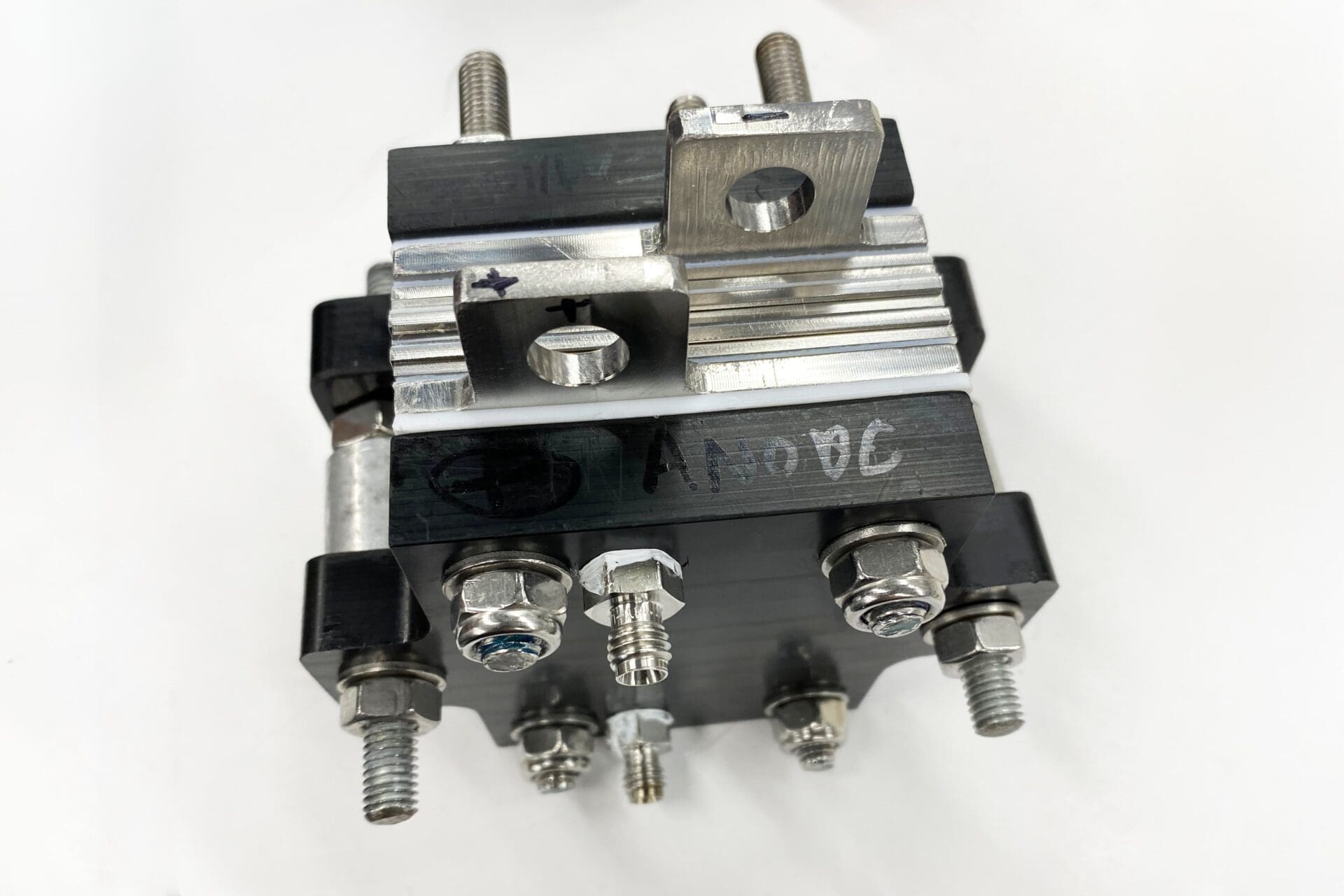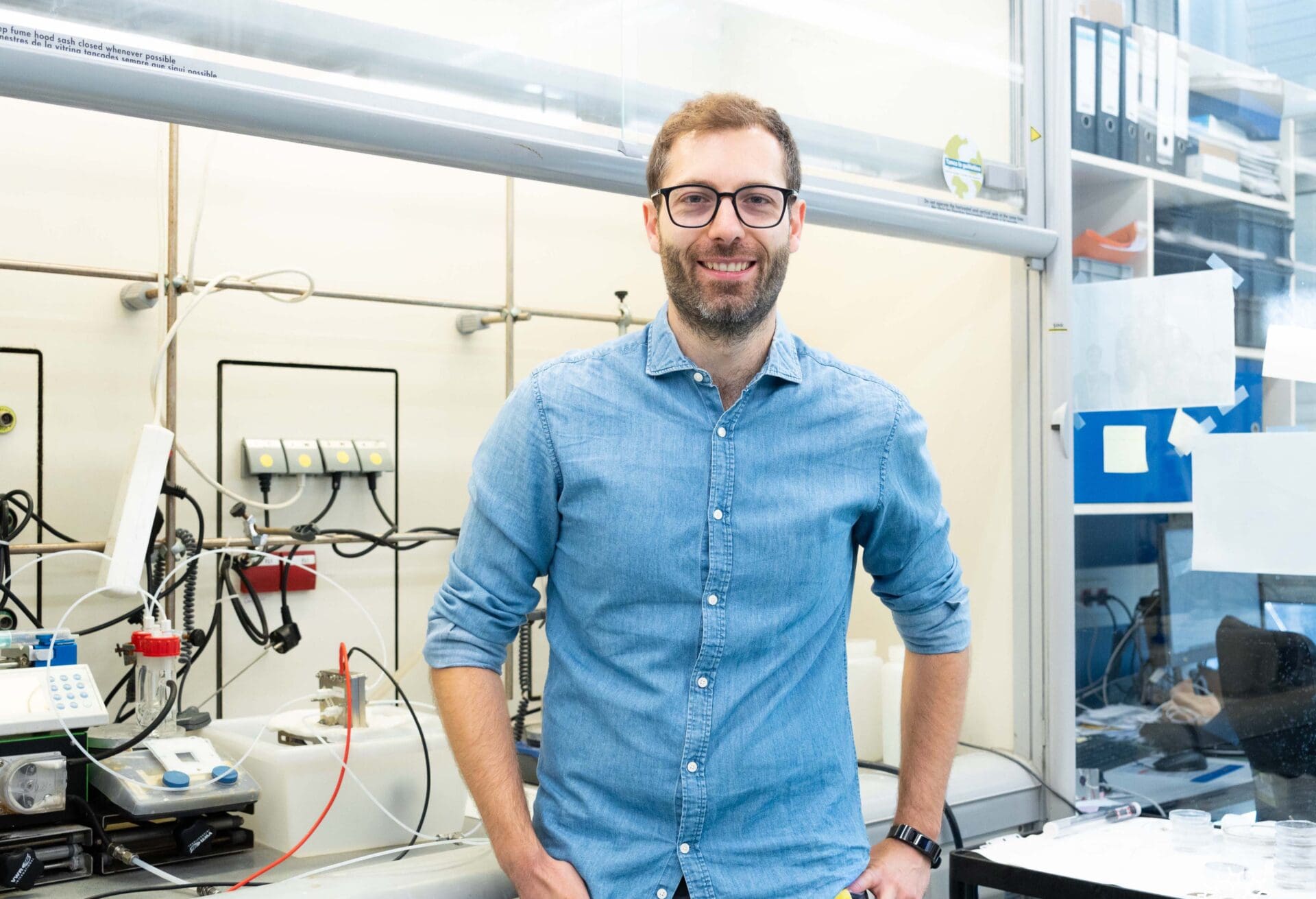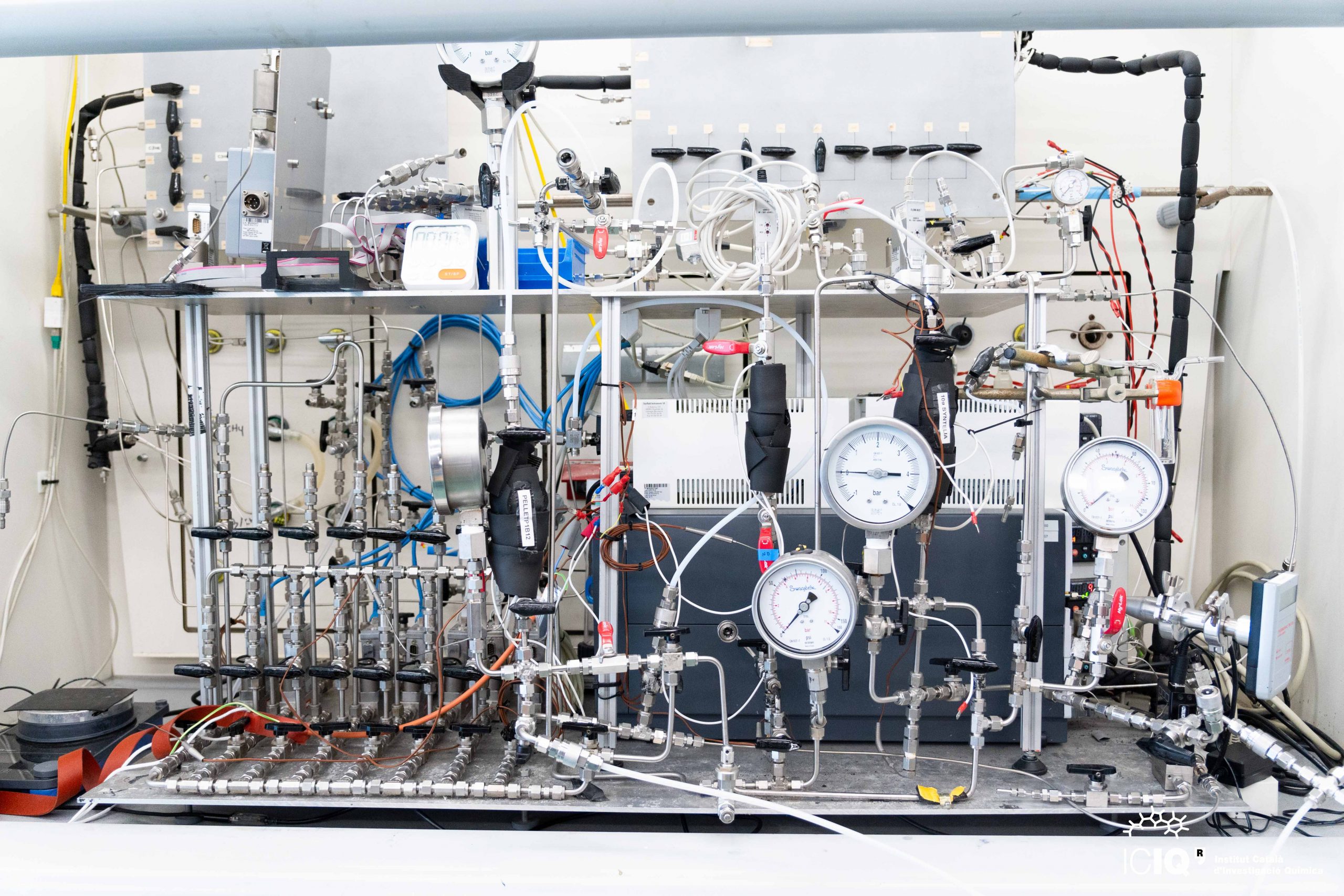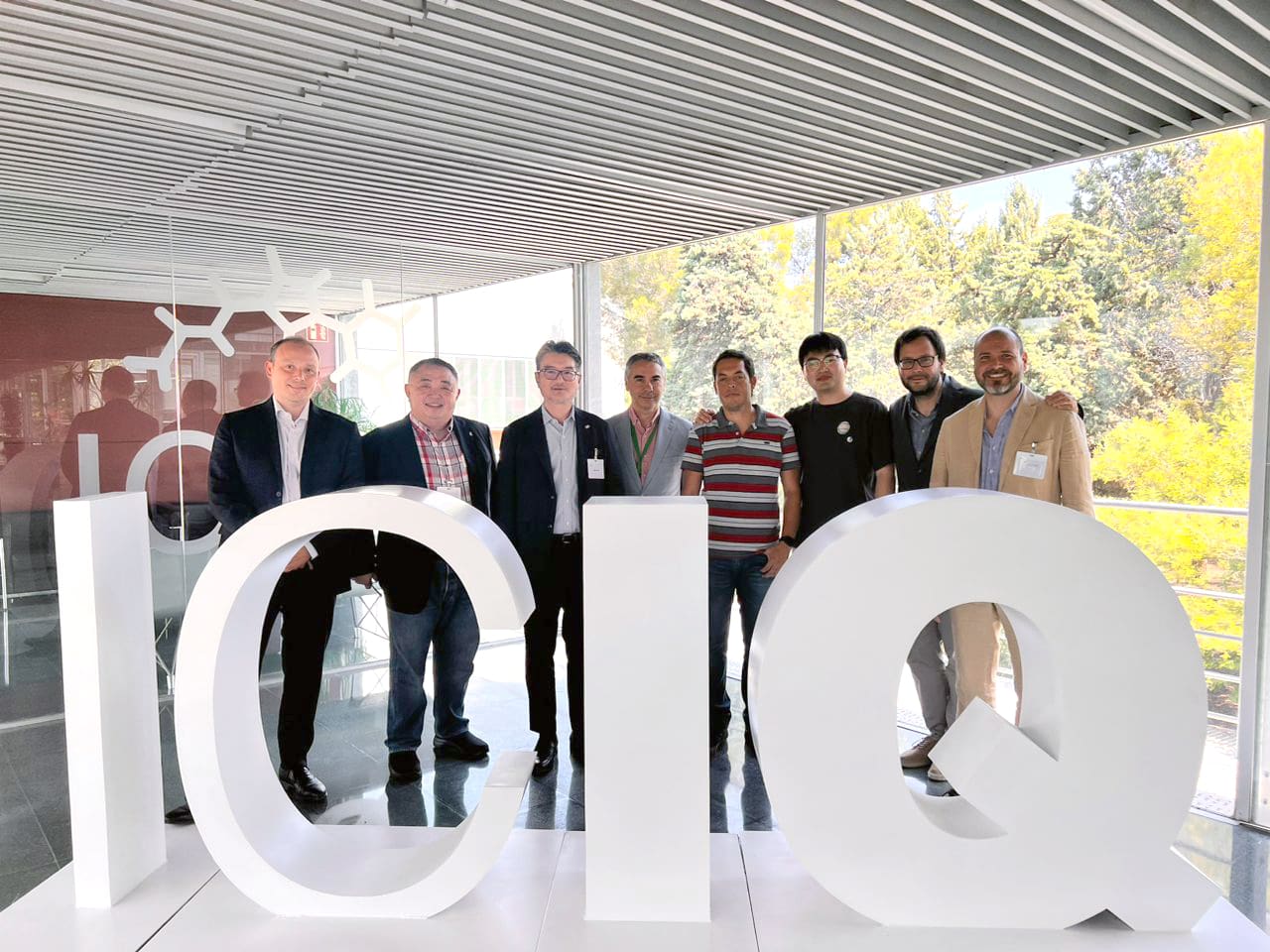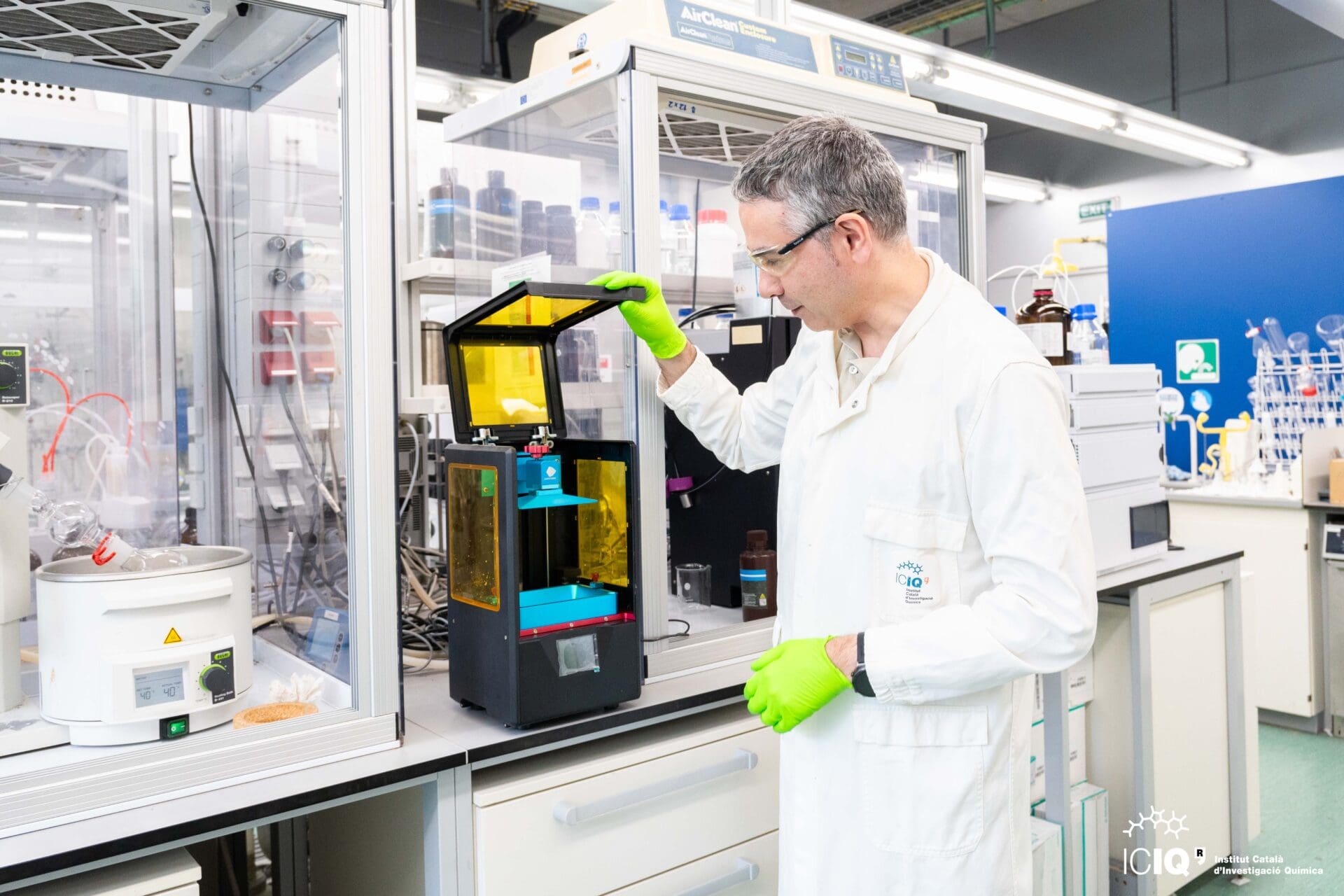CSOL’s expertise in valorization applied to electrochemistry: innovative solutions from large-scale energy production to focused niche applications
Is your company facing industrial process troubles? Did you know that electrochemistry can be integrated into your industrial production needs?
In recent years, electrochemistry has demonstrated to be a discipline with huge potential in innovation, sustainability and new technology development. CSOL, the innovation unit from the Institute of Chemical Research of Catalonia (ICIQ-CERCA), owns state-of-the-art equipment and highly qualified personnel to develop electrochemistry projects with a wide range of solution objectives.
Electrochemistry is the study of the relationship between electrical energy and chemical changes, and is efficient in finding innovative solutions for large-scale productions and more targeted and reduced markets. For example, applications range from mass green hydrogen generation to very specific biological analyses.
Two ICIQ innovative projects that demonstrate the utility of electrochemistry in both large and small-scale productions are the project Electra-H2, which derived in the creation of the spin off “Jolt Solutions”; and the ICIQ and UAB project CrineSens, an internal UAB PoC (2020) project that is continued today in Prof. Llobet’s lab with SelSens, supported with funds providing from the Ajuts Producte call from AGAUR.
Electrochemistry on an industrial scale
The generation of sustainable energy is one of the most interesting applications of electrochemistry. This technology generates green hydrogen through water electrolysis, and this is the aim of Jolt Solutions. The spin-off is based in a technology that originates in Prof. Lloret-Fillol’s group in ICIQ. Thanks to the Mobile World Capital Foundation’s entrepreneurship programme, The Collider , and the collaboration of CSOL and ICIQ, with funding from ”la Caixa” Foundation, the technology project ended up as a start-up.
The collaboration between Jolt and CSOL has been essential since the beginning of the project. We have worked very well together.
Dr. Alberto Bucci, Jolt Solutions CTO
The Jolt team has developed catalysts that allow industrial-scale production of hydrogen, facilitating oxidation of water. The main challenge of this application is the cost of the technology and the robustness, durability and stability of the catalysts, aspects that Jolt team has optimised at CSOL’s laboratory. Dr. Alberto Bucci, Jolt’s Chief Technology Officer (CTO), claims that this collaboration has been essential to the project’s development: “The partnership has helped us advance in the research project, and we also have developed the market-oriented part.”
ICIQ provided Jolt with electrochemistry state-of-the-art equipment through CSOL, which gave them the opportunity to advance in the maturation of the technology, while the Jolt team provided CSOL with in-depth know-how in electrochemistry.
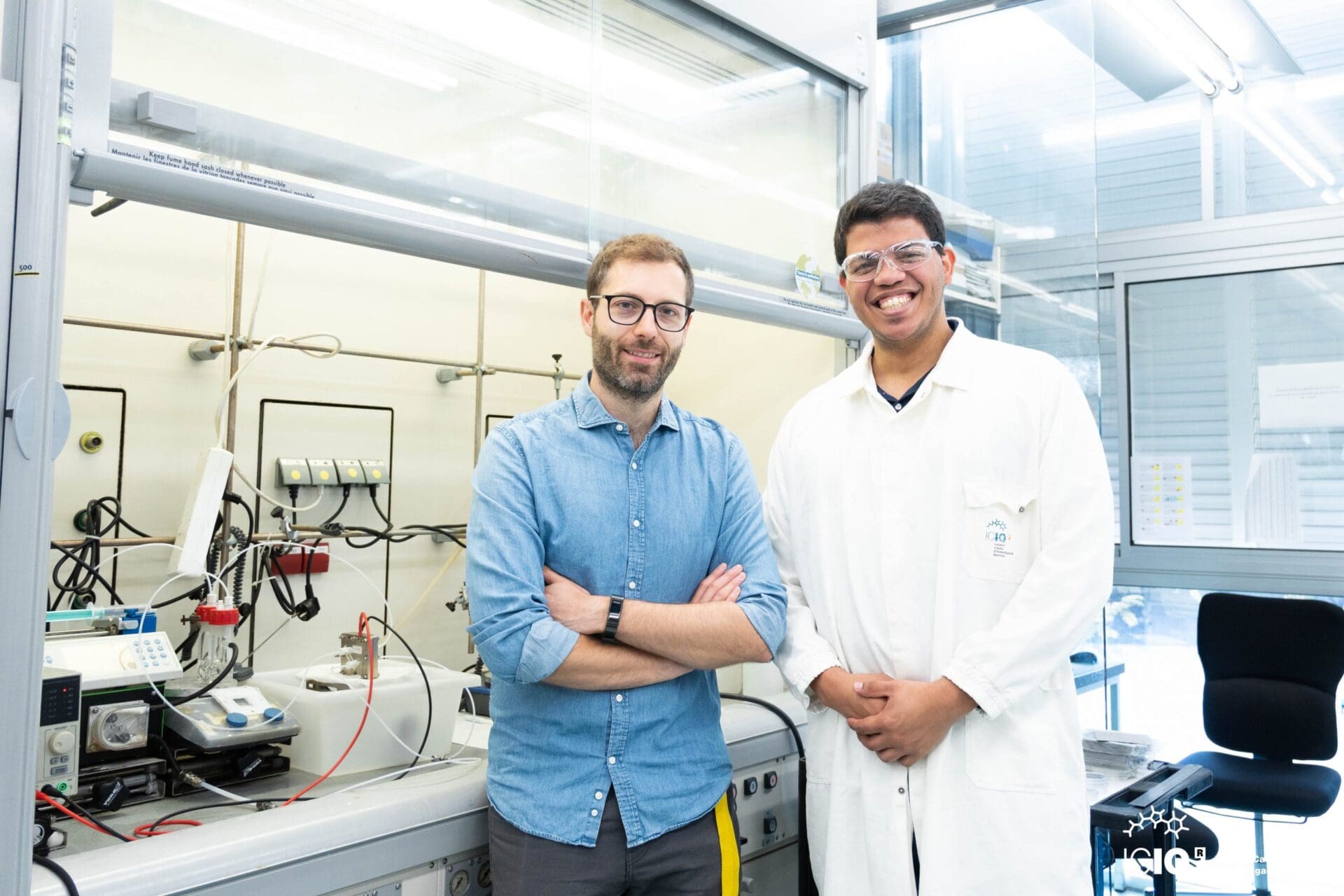
Dr Alberto Bucci (left), Jolt Solutions CTO, and Dr. Luis Enrique Botello, Head of Electrochemistry.
Small-scale applications of electrochemistry
But this technology is not only useful in green hydrogen production. Any molecule with oxidation capacity can have an interesting application. The electrical answer of this kind of molecules gives a measurable response, which is proportional to its concentration. This fact opens the door to the application of electrochemistry to other fields, such as biological or biomedical applications.
The ICIQ and UAB project “CrineSens”, with the support of CSOL, investigated other kind of applications using a novel procedure for catalyst immobilization discovered at Prof. Llobet’s group, in collaboration with a group from the UAB. The catalyst developed by the research group was found to be useful in the detection of parabens and other restricted molecules. These molecules are potential endocrine disruptors, and there is an increased need for controlling their presence in shampoos, dentifrices and other cosmetic and sanitary products.
In conclusion, electrochemistry is a tool that opens new market opportunities for a wide range of industrial processes and medical devices yet to be explored.

The Electra-H2 project (PDC2021-121185-I00) was funded by CIN/AEI/10.13039/501100011033 (Proyectos I+D+i «Pruebas de Concepto» 2021) and by Unión Europea “NextGenerationEU”/PRTR.

The CrineSens project was funded by Programa Proof of Concept 2020 (UAB), supported by Generalitat de Catalunya – Departament d’Economia i Coneixement and ERDF (European Regional Development Funds).

The SelSens project (2021 PROD 00026) is funded by Generalitat de Catalunya – Departament de Recerca i Universitats and Agència de Gestió d’Ajuts Universitaris i de Recerca (Convocatòria dels ajuts d’Indústria del Coneixement (Llavor i Producte). Modalitat B. Ajuts Producte).
Related news

Let's create a brighter future
Join our team to work with renowned researchers, tackle groundbreaking
projects and contribute to meaningful scientific advancements






 17-12-2024
17-12-2024 